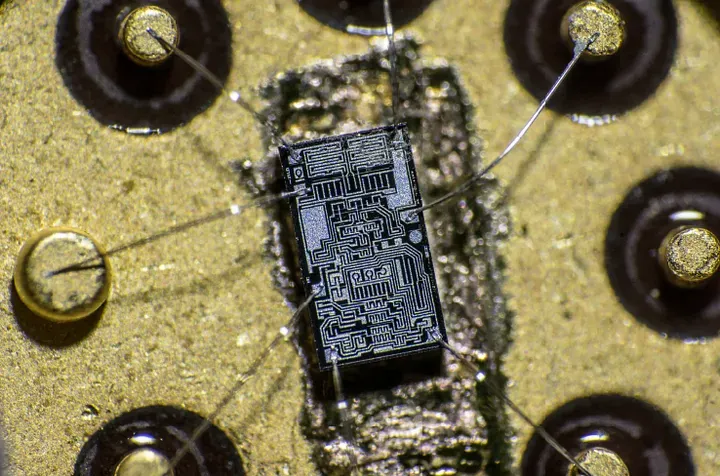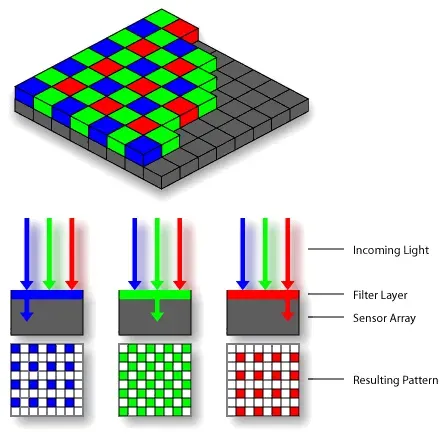Exploring the intricacies of camera sensors and the physics that make capturing breathtaking images possible
In the realm of digital photography, the camera sensor plays a pivotal role, functioning as the heart of the camera and the foundation for creating stunning images. As the technology driving these sensors continues to evolve, so too does the potential for capturing extraordinary photographs that captivate the imagination. To make the most of this potential, it is crucial for photographers to understand the inner workings of camera sensors and the physics that underpin their operation.
This article aims to provide a comprehensive and detailed examination of camera sensors, exploring their development, design, operation, and the fundamental principles of light and colour that govern their ability to record captivating images. By mastering the science behind camera sensors, you can unlock the full potential of your camera and take your photography skills to new heights.

Author’s photo
The Evolution of Camera Sensors: From Film to Digital
To understand the development of camera sensors, we must first take a brief look back at the history of photography. In the early days of photography, cameras relied on chemically-treated film to record images, with light-sensitive silver halide crystals embedded in the film’s emulsion layer capturing light and creating a latent image that could be developed into a photograph.
However, as technology advanced, digital cameras emerged, utilising electronic sensors to record images rather than film. These sensors have continued to evolve and improve, paving the way for the advanced digital cameras we use today.

Author’s photo
The Heart of the Camera: Types of Digital Camera Sensors
In digital cameras, the sensor is responsible for capturing light and converting it into electrical signals that can be processed into a digital image. There are two primary types of digital camera sensors: charge-coupled device (CCD) sensors and complementary metal-oxide-semiconductor (CMOS) sensors.
Charge-Coupled Device (CCD) Sensors
CCD sensors were among the first types of digital camera sensors developed, and they function by moving electrical charges generated by light across the sensor to a specific area where they can be read and processed. CCD sensors are known for their excellent image quality and low noise levels. However, they tend to be more expensive to produce and consume more power than CMOS sensors. The difference in quality between CCD and CMOS sensors has decreased dramatically, and nowadays, even specialised cameras typically use CMOS sensors.
Complementary Metal-Oxide-Semiconductor (CMOS) Sensors
CMOS sensors have become the dominant type of sensor used in digital cameras due to their lower cost, lower power consumption, and faster readout speeds compared to CCD sensors. CMOS sensors function by using photodiodes at each pixel site to generate electrical signals that can be read and processed individually. This allows for faster readout speeds and reduced power consumption, making CMOS sensors particularly well-suited for use in cameras.

Author’s photo
Harnessing Light: The Physics of Camera Sensors
To understand how camera sensors work, we must first examine the physics of light and its interaction with the sensor’s various components.
Photons and Photosites: The Building Blocks of Digital Images
Light is composed of particles called photons, which carry packets of energy called quanta. When light enters the camera, these photons strike the camera sensor, where they interact with the sensor’s photosites (also referred to as pixels).
Each photosite on the sensor contains a photodiode, which is a light-sensitive semiconductor that generates an electrical charge proportional to the intensity of the incoming photons. The greater the number of photons that strike a particular photosite, the stronger the electrical charge generated by its photodiode.
The Quantum Efficiency of Camera Sensors
Quantum efficiency is a measure of a camera sensor's ability to convert incoming photons into electrical charge. A sensor with a high quantum efficiency is more efficient at converting light into a usable electrical signal, which can result in better image quality and reduced noise levels. The quantum efficiency of a camera sensor is influenced by factors such as the materials used in its construction, the design of the photosites, and the presence of micro-lenses that help to focus incoming light onto the photodiodes.
From Electrical Charge to Digital Image: The Analog-to-Digital Conversion Process
Once the electrical charges have been generated by the photodiodes, they must be converted into a digital format that can be processed by the camera's internal electronics and stored as an image file. This conversion process is performed by an analog-to-digital converter (ADC) that assigns a digital value to each photosite based on the strength of its electrical charge. The resulting digital values make up the individual pixels that comprise the final image.

Author’s photo
Understanding Color in Digital Photography: The Role of Color Filter Arrays and Demosaicing
While camera sensors are highly efficient at capturing the intensity of incoming light, they are unable to differentiate between the various wavelengths that make up the visible spectrum of colours. To overcome this limitation, digital cameras utilise a colour filter array (CFA) that overlays the sensor's photosites with a repeating pattern of coloured filters, most commonly a Bayer pattern consisting of red, green, and blue filters.
The CFA allows each photosite to capture information for a specific colour channel (red, green, or blue), which can then be combined to form a full-colour image. However, because each photosite only captures information for one colour channel, the camera must perform a process known as demosaicing to determine the colour values for the other two channels at each pixel location.
Demosaicing algorithms use the data from neighbouring photosites to interpolate the missing colour values, creating a full-colour image from the partial colour information captured by the sensor. While this process is highly effective, it can sometimes result in artefacts and colour inaccuracies, particularly in areas with fine detail or high contrast.

A simplified schematic of the colour filter array on a camera sensor. Picture: Wikimedia Commons, CC BY-SA 3.0
Camera Sensor Sizes and Their Impact on Image Quality
Camera sensors come in a wide range of sizes, with larger sensors generally offering better image quality, improved low-light performance, and increased dynamic range. The size of a camera sensor is directly related to the size of its individual photosites. Larger photosites are capable of capturing more light, resulting in higher signal-to-noise ratios and improved image quality.
Some of the most common camera sensor sizes include:
- Full-frame sensors (35mm): Found in professional DSLR and mirrorless cameras, full-frame sensors offer the best image quality, low-light performance, and dynamic range but come with a higher price tag.
- APS-C sensors: A smaller sensor format used in many consumer DSLR and mirrorless cameras, APS-C sensors offer a good balance between image quality and cost, making them popular among enthusiasts and semi-professionals.
- Micro Four Thirds sensors: Utilized in Micro Four Thirds camera systems, these sensors are smaller than APS-C sensors but still provide good image quality.
- Compact camera sensors: Found in most point-and-shoot cameras and smartphones, these small sensors typically have lower image quality and dynamic range compared to larger sensor formats but are more affordable.

Author’s photo
Conclusion
The camera sensor is a critical component of digital photography, serving as the foundation for capturing breathtaking images that inspire and captivate. By understanding the intricate workings of these sensors and the physics that underlie their operation, photographers can elevate their craft and unleash the full potential of their cameras. As technology continues to advance and camera sensors evolve, the possibilities for creating exceptional images will grow immensely.

This article is (or will be) reposted on my other blogging and social profiles.
https://linktr.ee/neurodivergent_ai
You can find me on